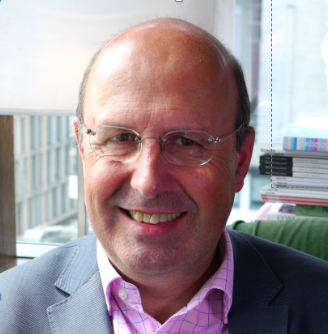You can sign up to our LinkedIn newsletter here.
From One Job to Many
For many of us, we have had a working life where we have one job where we’re accountable to one set of people and we are doing one thing. When you become a Portfolio Executive, this no longer applies. You will have multiple clients who expect the best of you. You’ll also have another job which is the running of your own business including the engagement of a support team who help you to build that business and the marketing and winning of new business.
Suddenly you’ve been shifted from a world which on the surface seems very simple, one boss, one job, one place of work. Now you’ve got four to six different bosses, four to six different jobs, plus two or three other significant roles: managing the operations of your business, engaging the team support within your business and winning new business. When I’m working with Portfolio Executives, they often struggle with this switch from what they saw as a world where there was a single task, to this new world where they feel they are multitasking.
“Plus ça change, plus c’est la même chose”
The reality is the switch is not as significant as you might believe. For anybody in a senior role, you will have had multiple responsibilities. If you think of the marketing director, you will have had responsibilities as part of the executive team, which may involve initiatives that go way beyond just the pure marketing role. You will be attending the board meetings where you’ll have responsibilities for the whole company, rather than just your area. You will have responsibilities for growing and developing your people, as well as growing and developing their function. You will have responsibilities for developing strategy and tactics, as well as managing the people who report to you, and managing delivery of projects.
Allocating Clients to Specific Days
If you were to look at your diary in your previous role, you’d have seen there’s a whole blend of different things that you have been able to schedule effectively throughout your working week and across the working month. It’s not that different in the Portfolio Executive workstyle. As you come to grips with the changes, part of it is shifting your attitudes and recognising that it’s the same game just played on a different playing field. The people I work with who find this most difficult are former consultants. As a consultant they are used to a world in which they have responsibilities to the consulting business. Yes, they have responsibilities to their team, but their work has tended to be structured around particular days, dedicated to particular clients, often on client sites. As a first step to managing the complexity of being a Portfolio Executive it’s often quite helpful for you to start by dedicating particular days to particular clients. When you’re onboarding a new client, you will need to have a level of activity and intensity at the early stage of your client relationship, having days dedicated to your new client will build momentum. But as your client relationships mature, operating this way is less and less helpful.
Increasing your Flexibility
The reason is this. You need to be able to provide a level of availability to clients to deal with the ad hoc, to give them the impression that you’re serving them on an ongoing basis. Not that you’re only there on the first Monday and the third Wednesday and the fourth Friday of each month. Their lives are continuing and they want to feel that you are part of their working lives on an ongoing basis. I suggest you schedule, on average, one day a month, where you are on site with the client. This doesn’t necessarily mean that on that day you will only do client work for that client. But you have set aside a time where you are going to have the meetings and build the relationships that are best conducted in person.
The second thing I suggest is that you set a regular roster of meetings that support your client relationship. This means you will set some fixed points in their schedule. You will need to prepare for these meetings and then be present at those meetings. Ideally, most of the meetings are done remotely.
The third thing I recommend is to look at how you can set aside some time every day for ad hoc queries. Each day, if there’s an urgent client requirement or if you need to follow up on something for a client, it can be done promptly, rather than having to wait for the next day in your client service cycle.
Committing to Deep Work
I think one of the challenges that people face with this multitasking is switching from one thing to another. You may finish a board meeting with client A and go into a planning meeting with client B, then from there go into a meeting with your marketing assistant to help you develop your own business. Later the same day you may be involved in a strategic pitch on behalf of your client for their business. These frequent switches of context can feel overwhelming. I think it is just practice. I have had seasons when I had up to 10 one-hour meetings a day with different groups, on different topics, for different purposes.
The hardest thing is to set aside time for what I call deep work. How do you set aside the time, perhaps two or three hours or even more to write a detailed strategy paper, the next chapter of your book, or do some detailed planning? I have found that for me, the best time to do that is before the working day. For you it may be after supper. Perhaps you will want to clear a whole day and spend the morning doing anything but work, before you sit down and concentrate. As a Portfolio Executive, you can have complete flexibility to choose when you do your deep work. You’re no longer bound by the expectation that you have to leave the house at seven o’clock in the morning and commute for two hours to turn up and be present at nine. You don’t have to be there until six thirty in the evening and then travel back for another hour and a half, five days a week. Now you can choose if it suits you better to set aside time first thing in the morning between six to nine to do that deep work, or to spend the afternoon playing golf because you know that your best thinking time is between seven and 10 in the evening. Perhaps the best way to prepare is to go out and have that hour long swim that you’ve always promised yourself at lunchtime.
Conclusions
Use the flexibility of the Portfolio Executive workstyle to support the needs of multitasking. Explore styles of working for different kinds of activity. Above all, recognise that the more things change, the more they stay the same. These are problems you have solved before and you now have even more choices as to how to solve them today.

Charles McLachlan is the founder of FuturePerfect and on a mission to transform the future of work and business. The Portfolio Executive programme is a new initiative to help executives build a sustainable and impactful second-half-career. Creating an alternative future takes imagination, design, organisation and many other thinking skills. Charles is happy to lend them to you.
